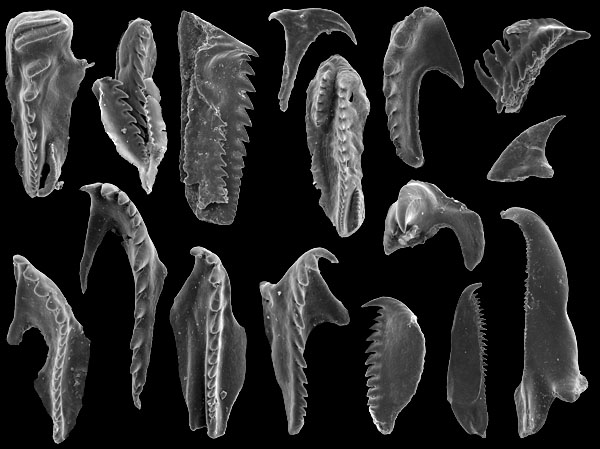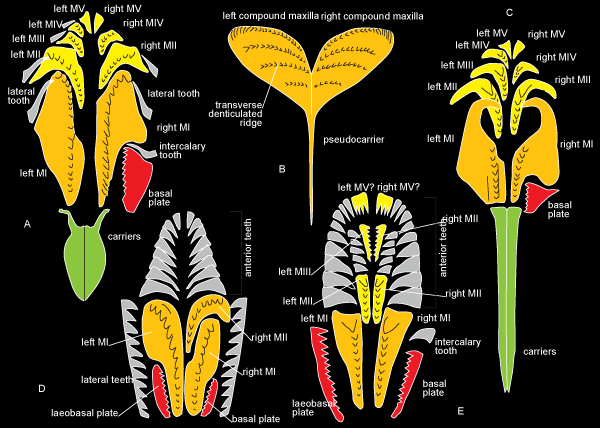Recent publications (11)
About scolecodonts
Scolecodonts (worm jaws in Latin) are tiny jaws of polychaete annelids of the order Eunicida - a diverse and abundant group of worms which has been inhabiting different marine environments in the past 500 Million years.
Composed of highly resistant organic substance, the scolecodonts are frequently found as fossils from the rocks as old as the late Cambrian. Since the worms themselves were soft-bodied and hence extreamly rarely preserved in the fossil record, their jaws constitute the main evidence of polychaetes in the geological past, and the only way to restore the evolution of this important group of animals. Small size of scolecodonts, usually less than 1 mm, puts them into a microfossil category. They are common by-product of conodont, chitinozoan and acritarch samples, but sometimes they occur in the sediments where other fossils are very rare or absent.
In fact, the scolecodonts derive from rather complex jaw apparatuses consisting of numerous differently shaped, usually paired elements. Occassionally, if right collecting techniques are employed, entirely preserved jaw apparatuses can be found. Usually, however, indirect methods need to be used to reconstruct different individual jaws back into jaw apparatuses representing particular (natural) genera and species. In the early stage of scolecodont research, every single jaw was taken as a separate species with its own binominal name. This made artificially the number of taxa very large and caused high demand of large-scale revisions by later students.

Fossil scolecodonts are rather poorly studied - that's because of common belief of hopelessly confusing taxonomy and, on the other hand, rather slow evolution and strong facies dependance which makes the jaw-bearing polychaetes them less attractive for biostratigraphy. Currently there are only some five persons with noteworthy experience in fossil scolecodont research, and even less who are actively publishing on the subject.
